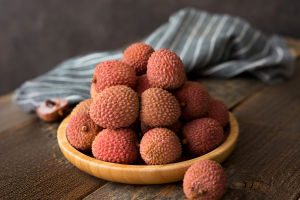Asparagus has captivated the culinary world for centuries. With its elegant appearance, delicate flavor, and numerous health benefits, this vegetable has found its place in both humble kitchens and high-end restaurants alike.
In this article, we explore the fascinating history of asparagus, its evolution from ancient delicacy to modern culinary treasure, and its prominent role in today’s gourmet cuisine.
A Glimpse into Asparagus' Ancient Roots
The history of asparagus dates back over 2,000 years. Ancient Egyptians, Greeks, and Romans cherished asparagus, considering it a food of the elite. In Egypt, it was not only used as food but also for medicinal purposes, as it was believed to aid in digestion and promote fertility. The Romans took it a step further, preserving asparagus by drying it, a practice that allowed them to enjoy it year-round.
It is from the Roman Empire that asparagus made its way across Europe, becoming a staple in the Mediterranean diet. The vegetable was considered so valuable that it was often transported by special boats to ensure it arrived fresh. This reverence for asparagus continued through the ages, with the French, in particular, cultivating it in royal gardens to serve at their grand feasts.
The Evolution of Asparagus Cultivation
Asparagus cultivation was originally limited to the Mediterranean region, where it thrived in the warm climate. However, over time, it spread across Europe and the rest of the world. By the 17th century, asparagus cultivation had expanded to France, and by the 18th century, it had made its way to England and the United States.
Farmers soon realized that asparagus required specific conditions to grow, particularly well-drained, sandy soil and plenty of sunlight. Asparagus is a perennial plant, meaning it can produce crops year after year. Once planted, it requires patience—up to three years—for the roots to establish before harvesting can begin. But once established, asparagus can yield a plentiful harvest for over 15 years, making it a long-term investment for gardeners.
Asparagus in Gourmet Cuisine
Today, asparagus is a prized ingredient in gourmet cuisine. Renowned chefs worldwide appreciate its versatility and ability to elevate any dish. Whether served as a standalone side dish or incorporated into a sophisticated entrée, asparagus brings both elegance and flavor to the table.
In French cuisine, asparagus is often served with hollandaise sauce, a rich and creamy complement to the vegetable’s earthy taste. In Italy, asparagus is incorporated into risottos, paired with creamy cheeses, or used as a filling for delicate pasta dishes. In modern American cuisine, roasted or grilled asparagus is a popular accompaniment to meats like and fish, while asparagus is also used in salads, soups, and even as an addition to brunch dishes like omelets.
Different Varieties of Asparagus: A World of Flavors
Asparagus is available in various varieties, each offering distinct flavor profiles. The most common type is green asparagus, which is the most widely grown and sold. It has a fresh, slightly grassy flavor and is perfect for roasting, grilling, or steaming.
White asparagus, which is considered a delicacy in many parts of Europe, is grown underground to prevent it from photosynthesizing. This process keeps the spears pale and tender, with a milder, more delicate flavor than its green counterpart. Purple asparagus, a lesser-known variety, has a sweet, nutty flavor and is often favored for its striking color. Although less common in supermarkets, purple asparagus is a delightful addition to any dish.
Health Benefits of Asparagus in Modern Diets
Asparagus is not just a culinary gem—it’s also packed with essential nutrients. This low-calorie vegetable is rich in vitamins A, C, E, and K, as well as folate, fiber, and antioxidants. These nutrients contribute to healthy skin, improved immune function, and better heart health. Additionally, asparagus contains inulin, a prebiotic fiber that supports digestive health by promoting the growth of good bacteria in the gut.
Recent studies suggest that asparagus can help regulate blood sugar levels, making it a beneficial food for those managing diabetes or those trying to maintain stable energy levels throughout the day. Its anti-inflammatory properties also make it an excellent food for reducing the risk of chronic diseases such as arthritis and heart disease.
Cooking Tips and Techniques for Asparagus
When it comes to cooking asparagus, we have many options to enhance its natural flavor. One of the simplest and most effective methods is roasting. Toss asparagus spears with olive oil, salt, and pepper, then roast them in a preheated oven at 400°F (200°C) for 10-15 minutes, until they are tender and slightly crispy. For an extra touch, finish with a squeeze of lemon juice or a sprinkle of Parmesan cheese.
Grilling asparagus is another excellent way to bring out its flavor, especially when paired with a drizzle of balsamic glaze or lemon zest. Steaming asparagus is perfect for preserving its nutrients, and it can be served alongside your favorite protein dishes.
Why Asparagus Will Always Be a Star on Our Plates
From ancient royalty to modern chefs, asparagus has remained a beloved vegetable with rich history, exceptional flavor, and a place at the table in both casual and fine dining. Its cultivation, once a painstaking process, is now a celebrated tradition that continues to yield bountiful harvests. With its numerous health benefits, distinct varieties, and versatility in the kitchen, asparagus is undoubtedly a timeless treasure in the culinary world.
As we discover the many ways to prepare and enjoy asparagus, it becomes clear why it has earned such a lasting place in our kitchens. A single spear can bring a burst of freshness to a dish, and a thoughtfully crafted asparagus recipe can turn an ordinary meal into something truly special. Let’s continue to celebrate this vibrant vegetable and make it a proud highlight of our dining tables.


